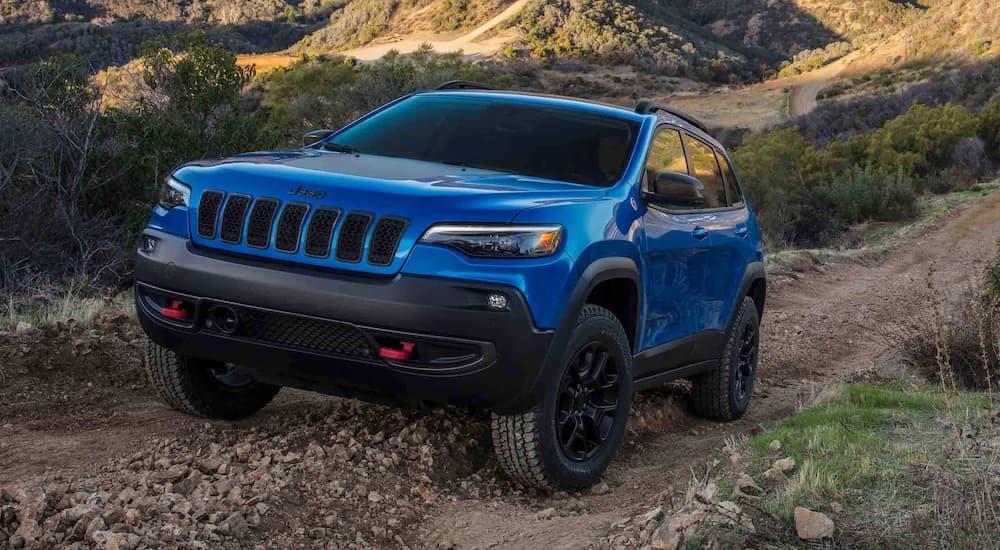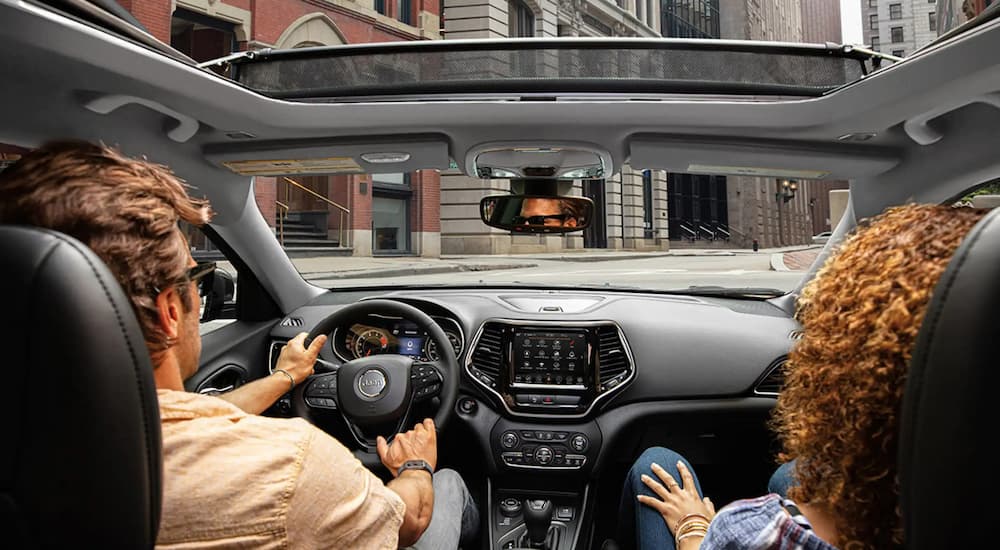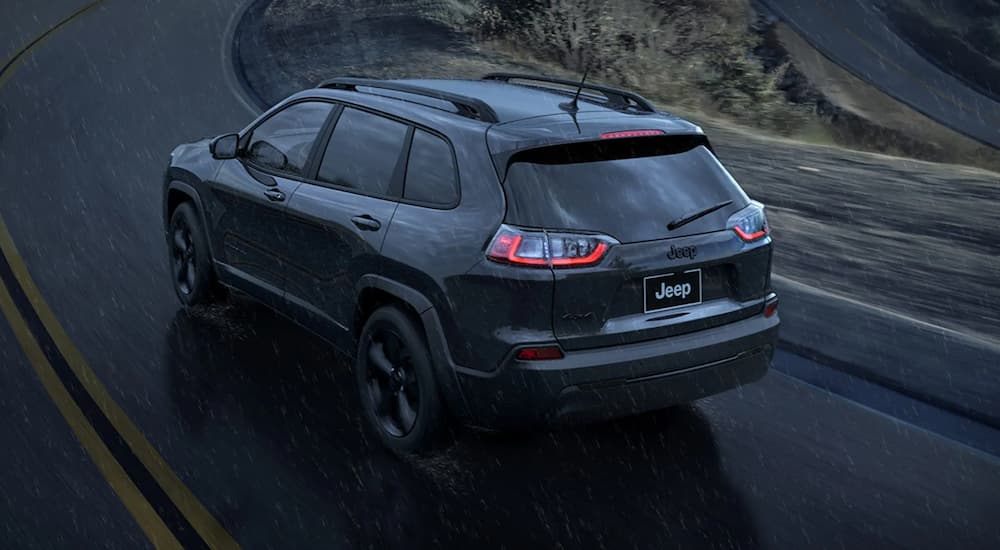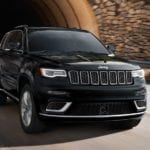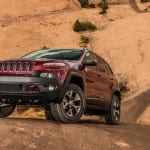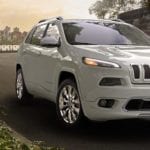The Cherokee is among the most iconic vehicles from the Jeep brand, having earned a place alongside models like the Wrangler, the Wagoneer, and the original Willys MB. It was a part of the Jeep family for half a century and was among the very first modern crossover SUVs. However, it is now bowing out of the Jeep lineup, making the 2023 Jeep Cherokee the last of its kind that you will be able to find at your local Jeep dealer––at least for now. With the demise of this automotive icon, it’s time to look back at where the Cherokee came from, how it reached its current state, and what may lie in the future of this respected nameplate. The Cherokee has had a rich history, and we wouldn’t be surprised to see it return to the Jeep lineup in the future.
Fifty Years of Adventures
The first appearance of the Jeep Cherokee was in 1974 when the name was introduced for a two-door model based on the already long-running Jeep Wagoneer. The Cherokee was intended to be a sportier counterpart to the somewhat high-end Wagoneer and offered a selection of powerful V8 engines, including the largest engine ever offered in a Jeep model––a mighty 6.6L eight-cylinder. This original version of the Cherokee ran for nine years, making it a fairly successful vehicle right off the bat, but the name was destined for even greater things.
The second-generation Cherokee arrived for the 1984 model year and completely changed the game for SUVs everywhere. Commonly referred to as the “XJ” by Jeep fans, this boxy model employed a car-like unibody design. Today, we usually consider crossover SUVs to be watered-down vehicles better suited for your daily commute than serious adventures, but the Cherokee XJ was something different. With real four-wheel drive and solid front and rear axles, this little SUV offered tremendous all-terrain capability and soon became a hit with off-roaders and explorers. In fact, rather than being a hindrance on the trail, the unibody construction saved over a ton of weight compared to the first-generation Cherokee, giving the second-generation model superior performance.
Production of the XJ continued until 2001. This 18-year production run is even more remarkable because Jeep changed hands twice in the period, with its parent company, American Motors, being bought out by Chrysler in 1987, only for Chrysler to merge with DaimlerChrysler in 1998. But those shake-ups in ownership were not enough to spell the end for the venerable Cherokee. Approximately three million examples were produced before the model grew too long in the tooth and was eventually retired. Even today, many enthusiasts look for used Cherokee XJ models to convert into off-road vehicles.
Finding a Place in a Changing World
Here in the United States, the Cherokee name vanished from Jeep dealer inventories with the retirement of the XJ. In its place was the all-new Jeep Liberty, which dismayed Jeep purists by introducing an independent front suspension in place of the old solid axles. However, it remained a relatively capable vehicle that occupied the Cherokee’s old position in the Jeep lineup. In fact, the Liberty was actually sold as the Cherokee in Europe, South America, the Middle East, and Australia. In 2008, a second-generation Liberty/Cherokee was unveiled, which traveled further down the path of Jeep heresy by swapping the solid rear axle for a multi-link suspension. By this point, crossover SUVs were plentiful, and Jeep realized that it had to cater more towards the mass market and trade some off-road capability for the on-road comfort most drivers were looking for.
In 2014, Chrysler Group (which had split from DaimlerChrysler in 2007 and reorganized after bankruptcy in 2009) merged with the Italian Fiat Group to form Fiat Chrysler Automobiles (FCA). The new entity brought a number of new technologies, engines, and automotive platforms to the Chrysler brands, and Jeep was among the largest beneficiaries of the new resources. One of the first vehicles produced after the merger was the all-new 2014 Jeep Cherokee, returning the Cherokee name to the American market. The Fiat Compact platform that underpinned the new Cherokee gave it an upscale feel that complemented its sharp new looks, but the powertrain was still all Jeep.
In an interesting nod to its Liberty lineage, the new Cherokee received the model code KL, following the KJ and KK codes used for the two Liberty generations rather than the XJ code of the second-generation Cherokee. It is this generation of the Cherokee that you can still find new on Jeep dealer lots, and it hasn’t changed all that much since it was introduced nearly a decade ago. The nameplate did see a facelift for the 2019 model year, but it wasn’t a dramatic one. But the biggest updates were the inclusion of a more efficient 2.0L turbocharged four-cylinder as part of the refresh and the update from the original Uconnect infotainment system on a five-inch screen to the much more modern Uconnect 4 on an 8.4-inch display.
The Final Cherokee
The last Cherokee KL rolled off the assembly line in February, although you can still find plenty of brand-new examples at Jeep dealers across the country. That points to the reason why the Cherokee was recently discontinued––it simply wasn’t selling that well. For most manufacturers, their compact SUV is their best-selling model. Simply look at the Toyota RAV4, Honda CR-V, Nissan Rogue, Hyundai Tucson, or even Tesla Model Y, all of which lead the sales figures for their respective brands. However, that wasn’t the case for the Cherokee. In fact, the Cherokee trailed both the rest of the Jeep lineup and the other models in its segment by a wide margin.
In 2022, Jeep only sold 40,322 Cherokee models, making it the second-worst-selling vehicle in the Jeep lineup (the Renegade held the unenviable position of worst-selling at 27,549 sold). In comparison, Jeep sold no fewer than 223,444 Grand Cherokee models despite it being significantly larger and more expensive than the Cherokee. Even the rugged Wrangler moved 181,409 examples despite appealing to a rather small selection of drivers. Looking at the compact SUV segment as a whole, no fewer than thirteen models outsold the Cherokee, including the Mitsubishi Outlander. The top-selling RAV4 outsold the Cherokee by an incredible 40:1 margin.
This isn’t to say the Cherokee is a bad vehicle––far from it. It’s actually the most powerful and off-road capable model in its segment. With 270 hp and 295 lb-ft of torque on tap from its turbocharged four-cylinder, the 2023 Cherokee has plenty of power, and the two-speed Active Drive Lock 4×4 system is simply outstanding for a compact crossover SUV. Meanwhile, the 8.7 inches of ground clearance, 4,000 lb maximum towing capacity, and numerous off-road features ensure the Cherokee is ready for every adventure. By all rights, it should have been a hit in a market obsessed with off-road vehicles. But despite its proven performance, the Cherokee was passed over by buyers in favor of newer models, and eventually, Jeep was forced to pull the plug.
What Comes Next?
While the 2023 model year is the last for the Cherokee, and it was recently announced that the Belvidere factory where it was built will be retooled to produce a new midsize pickup truck for Ram, we probably shouldn’t count the Cherokee out just yet. Despite the Cherokee’s poor sales in recent years, the compact SUV market as a whole is incredibly hot, and Jeep will need something to compete in it. Further, Jeep has announced aggressive plans for the electrification of its lineup, so we should probably expect several new EV models to follow the upcoming Jeep Recon.
Jeep is also well-known for dusting off retired names for new models––just witness the Gladiator, the Wagoneer, or even the Cherokee itself––so it wouldn’t be much of a surprise to see an all-new Cherokee arrive in the near future. Even if it doesn’t reappear in the Jeep lineup sometime soon, there is nothing saying that it couldn’t triumphantly return a decade or two from now to show a new generation of drivers what made the Cherokee name a legend.
